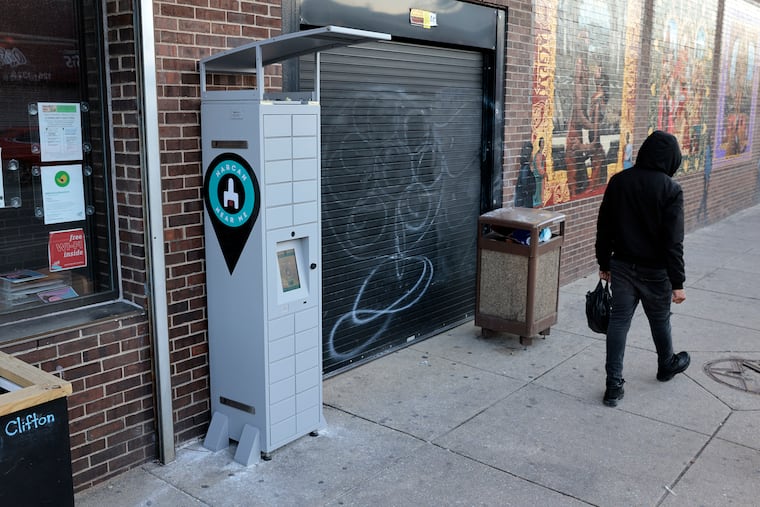Naloxone, the overdose-reversing drug, could soon be available over the counter. Philly experts say it’s a step in the right direction.
“This is public health 101,” said Rosie Frasso, the director of Thomas Jefferson University’s public health program. “You cannot help someone recover from addiction if they’re not alive.”

The opioid overdose-reversing drug Narcan could soon be as easy to obtain from pharmacy shelves as Tylenol and other over-the-counter medications, a move that public health experts hope will save lives, especially in cities like Philadelphia that are setting new records for overdose deaths each year.
Still, questions remain about whether greater access is enough: It’s unclear whether over-the-counter naloxone will be covered by insurance and eligible for the copay assistance programs that help people afford the medication, which typically costs between $20 and $40 with insurance, $50 without it.
Many states, including Pennsylvania and New Jersey, already give out thousands of doses of naloxone, the drug’s generic form, for free every year. At pharmacies, “standing orders” allow people to get the drug without an individual prescription. In New Jersey, anyone can walk up to a pharmacy counter and ask for naloxone for free.
Public health officials in Philadelphia believe their naloxone distribution efforts contributed to a slight drop in overdose deaths locally before the COVID-19 pandemic.
Naloxone alone cannot be a panacea for the opioid epidemic, public health leaders and addiction support workers say. But expanding access to the drug is an important step toward getting it into the hands of people who have not yet been reached by public health campaigns.
» READ MORE: Struggling with an addiction, or know someone who is? Here are ways to get help.
Free naloxone programs in Philadelphia and New Jersey
In Philadelphia, where the overdose death rate is the highest of any major U.S. city, naloxone distribution is a crucial part of the city’s harm-reduction efforts.
State officials urge counties to distribute 10 times more naloxone than the number of overdoses they see per year, said Charlie Nolan, who works for the city health department coordinating outreach efforts to reduce the harms of addiction.
“We’ve met and exceeded that,” he said.
In 2021, Philadelphia logged its highest number of fatal overdoses on record: 1,276. By the state’s guidance, that means the city should have handed out at least 12,760 doses. The health department exceeded the target and handed out about 114,000 doses.
Narcan continues to become widely available. In 2020, the department handed out about 96,000 doses; in 2022, it handed out more than 108,000 doses.
» READ MORE: How to get naloxone, the opioid overdose-reversing drug, in the Philadelphia region
Across Pennsylvania, the state Commission on Crime and Delinquency distributes free naloxone to organizations and individual residents, and has handed out about 959,000 doses since 2017.
The impact: State officials say that more than 22,815 overdoses have been treated using naloxone purchased by the state.
Still, naloxone isn’t always evenly distributed among communities that need it. Some studies show Black and Hispanic patients are less likely to be prescribed or get refill prescriptions of naloxone.
In rural Pennsylvania, naloxone distribution is significantly lower than in urban areas. And even in Philadelphia, as overdoses have risen in Black and Hispanic communities, city health officials have scrambled to get more naloxone and education to communities like North Philadelphia, where outreach on the opioid crisis has been comparatively scarce.
“This is public health 101,” said Rosie Frasso, the director of Thomas Jefferson University’s public health program. “You cannot help someone recover from addiction if they’re not alive.”
She and others stressed, however, that naloxone distribution should be coupled with education on how to use naloxone and outreach to dispel stigma around helping someone overdosing.
“You cannot help someone recover from addiction if they’re not alive.”
Cost remains a barrier to naloxone access
The Food and Drug Administration, which is expected to vote on the measure in March, has said that selling naloxone over the counter could drive down the cost.
Insurance covers most naloxone, but it’s expensive without insurance, and unclear whether insurance companies would be required to cover naloxone purchased off pharmacy shelves. Most other over-the-counter medications aren’t covered by insurance.
And Emergent, the maker of brand-name Narcan — the only formulation that will be sold over the counter — has yet to say how much they plan to charge.
“For people without financial means or insurance — as many are with opioid use disorder — having low-cost or free medication available remains critical,” said Lewis Nelson, a physician who heads the Division of Medical Toxicology at Rutgers New Jersey Medical School.
New Jersey Gov. Phil Murphy recently announced that his state would become the first in the nation to offer free naloxone to anyone who asks at a pharmacy.
Even when money is not an issue, stigma around drug use can make it difficult for people to ask pharmacists for naloxone.
“If they can discreetly grab it off the shelves, that might be a benefit for people,” Nolan said.